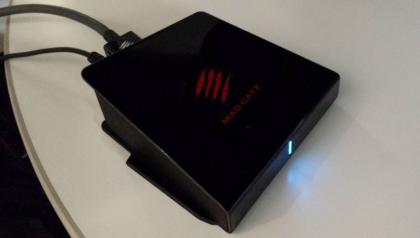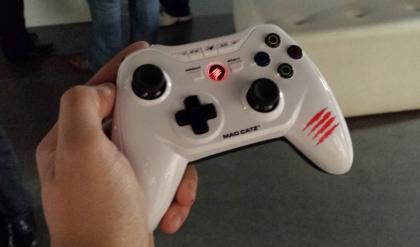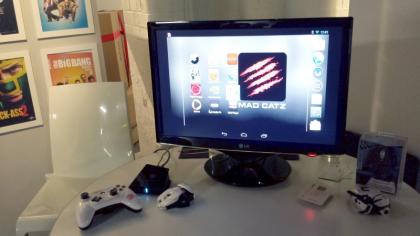Mad Catz M.O.J.O. Android micro-console review

We take an early look at the Android-powered M.O.J.O games console from peripheral specialists Mad Catz
Mad Catz arcade fight sticks might have received a mention during Microsoft’s Xbox One E3 keynote, but the company had another product to demonstrate on the show floor – the M.O.J.O. It’s an Android-powered micro console built to let you play smartphone and tablet games using a controller on the big screen. We finally got a look at one this morning, and can now bring you our first impressions.

As you might expect, given its “micro-console” monicker, the M.O.J.O. is a diminutive black box that’s barely any bigger than a deck of cards. The wedge shape leaves room for an HDMI output, two USB ports, a microSD card slot, MicroUSB port and 3.5mm headphone jack at the rear, without making the system too boxy.

From the front, the single blue power LED is the only sign of life – there’s no ports or inputs here. The bundled controller connects wirelessly, so there’s no need to plug it in.
The controller, which Mad Catz dubs the CTRLR, runs off two regular AAA batteries, rather than a rechargeable battery pack, but operates over the energy efficient Bluetooth 4.0 protocol so should be fairly frugal when it comes to draining them. It feels very similar to an Xbox 360 controller, with asymmetric analogue sticks, four face buttons, two triggers and two bumpers. There are also dedicated multimedia buttons and a mouse mode, which lets you navigate using the left thumbstick for games which don’t natively support controllers.

Pressing the Mad Catz logo in the centre of the controller will retuurn you to the Android home screen. Unlike the competing Ouya, which has its own custom user interface, M.O.J.O. runs a near-stock version of Android. This means that you’ll be able to access the Google Play store, along with all the apps and games tied to your account. You can also install a host of catch-up TV services and on-demand movie apps too, turning the device into a seriously comprehensive media streamer.

At the time of writing, specifications have yet to be finalised, but the development hardware is based on an Nvidia Tegra 3 processor, with 16GB of internal memory for apps and games. It was able to play graphically intensive games like Riptide GP smoothly at 1080p through a TV, but it’s highly likely that the final model will use a more powerful Tegra 4 CPU for even more performance.
With access to all your existing Android games, the Google Play store and a whole world of third party apps, emulators and multimedia, the M.O.J.O. has some clear benefits over a closed system like the Ouya. Whether the stock Android interface is well suited to a TV and controller combination is something that’s up for debate, but we imagine that the proliferation of Android-powered micro consoles means TV-centric launchers can’t be far behind. When that happens, M.O.J.O. could well be an excellent investment for anyone looking for a compact and powerful media streamer that can also play games.
We’ll know more about M.O.J.O. a little closer to launch, with the device expected to go on sale in time for Christmas here in the UK.









